As we discovered when researching the Lesser Celandine, the ancient herbalists used to call both the Greater and Lesser Celandine, simply Celandine. To this day it causes confusion, which is rather unfortunate, as the Greater Celandine was mainly used to cure eye trouble and the Lesser Celandine was used to cure piles. The Strange thing is that they belong to completely different plant families and look nothing like each other. The Lesser Celandine belongs to the buttercup family and the Greater Celandine is a poppy.
The word Celandine, in the case of the Greater Celandine, comes from the Greek word for Swallow, ‘Khelidonion’ or “chelidon’. Pliny the Elder (AD 23-79), hero and writer of the first encyclopaedia, noticed that the Greater Celandine blooms when the first swallows arrive and fades when they travel south again.
Pliny also wrote that the Greater Celandine was used as eye medication and that it was the swallows who discovered this medicinal property of the plant. He was convinced that Swallows fed their young - who he thought were all blind - with the yellow juice of the plant and that this made them see.
A few centuries later, John Gerard (1545 - 1612), barber-surgeon, keen gardener and writer of the 1,485 page long herbal “Generall Historie of Plantes” disputed that swallows used Celandine juice on their young. He couldn’t find any evidence that Swallow nestlings were particularly blind in the first place, or indeed that Swallow parents fed them Celandine juice. At all. Gerard did agree though, that the dark yellow Celandine juice was useful to treat eye trouble, especially the removal of cataracts.
He wrote:
“it cleanseth and consumeth awaie slimie things that cleave about the ball of the eye”
However, before you feel tempted to use bright yellow Greater Celandine juice to treat your cataracts, do note that it was also used to burn warts off skin.
Albertus Magnus (1200 - 1280) Bishop, philosopher, discoverer of the element Arsenic and writer of “The Book of Secrets of Albertus Magnus”, whom we met before in Flowerology (Hellebore and Daffodil), suggests to use Greater Celandine together with the heart of a mole. In doing so you will overcome all your enemies and win all arguments.
He also suggests to put Celandine on the head of a very sick man. He basically wrote that if the patient starts singing he’s cured, if he doesn’t, he’s dead.
Like the Foxglove, the Greater Celandine is highly poisonous, but is used in small doses for medicine. The juice contains many healing properties, especially alkaloids, and is mainly used for issues with the digestive tract, the gallbladder and to treat warts.
Spring Messenger is another name for Greater Celandine, although some say it’s another name for Lesser Celandine. The confusion continues.
Other Flowerology posts you might find interesting:
Lungwort (heavenly music, lung trouble and sheep)
Crocus (the complicated love life of a Greek minor Goddess / Nymph)
Snakeshead Fritillary (Roman armies, gambling and guinea fowl)
This newsletter is NOT a field guide for flower identification. It’s often difficult to tell the difference between harmless plants and poisonous plants and some flowers are rare and protected by law, so, NEVER pick or use any plants or flowers if you’re not sure about them.
illustrations and text ©Chantal Bourgonje


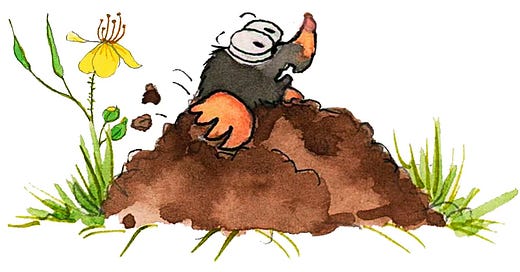





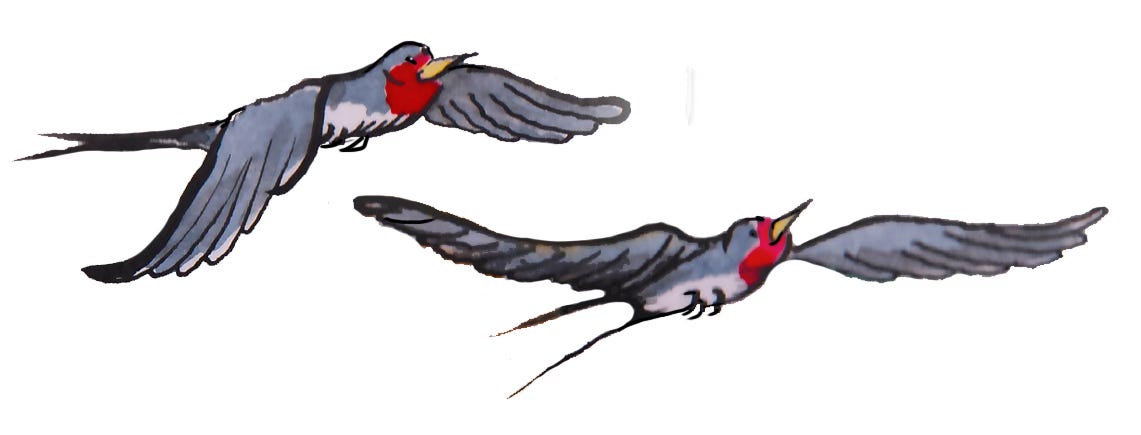


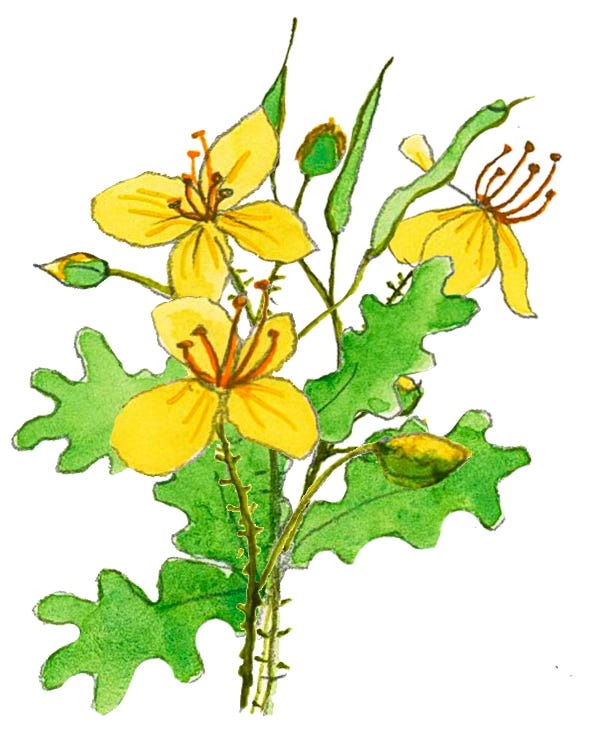
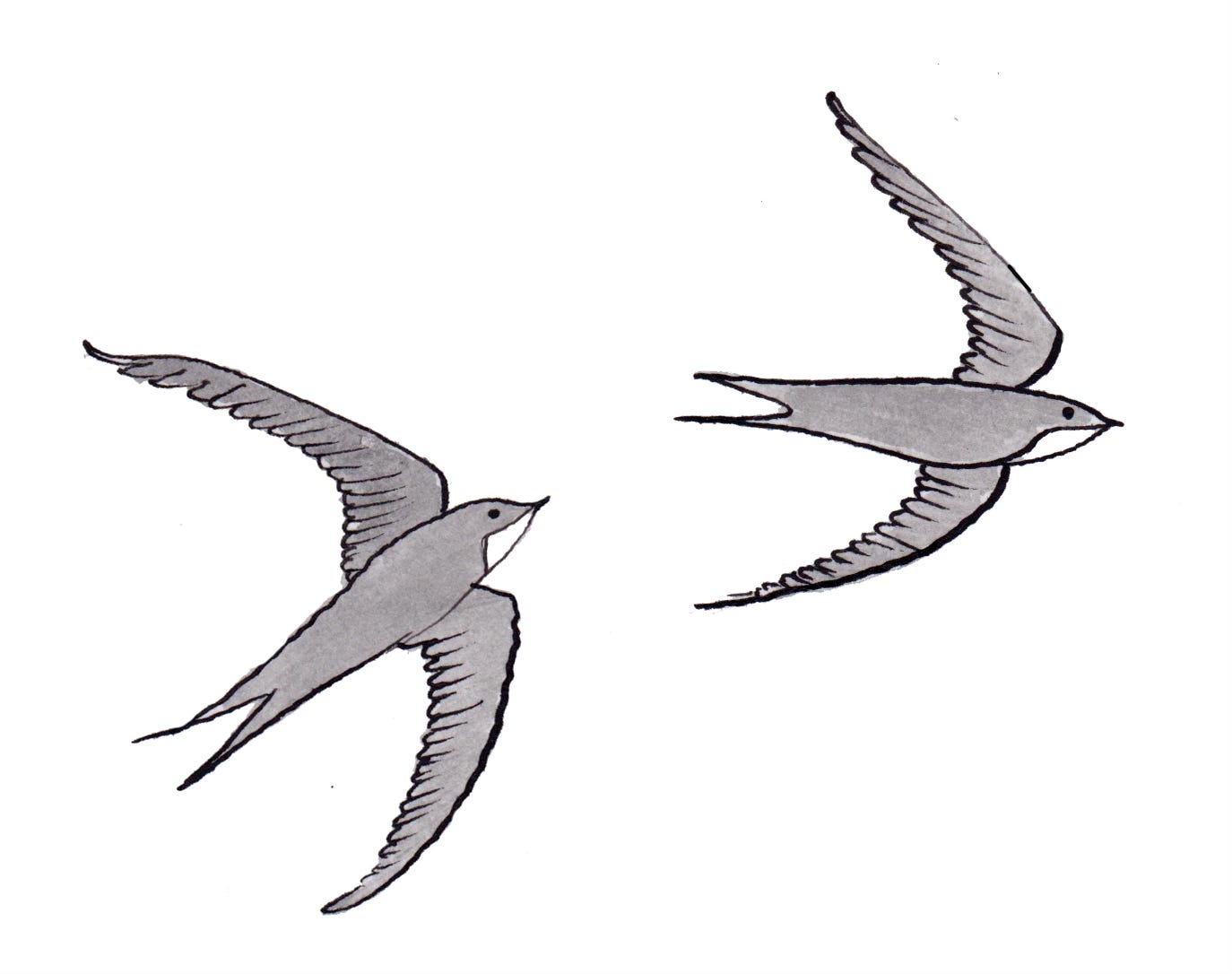

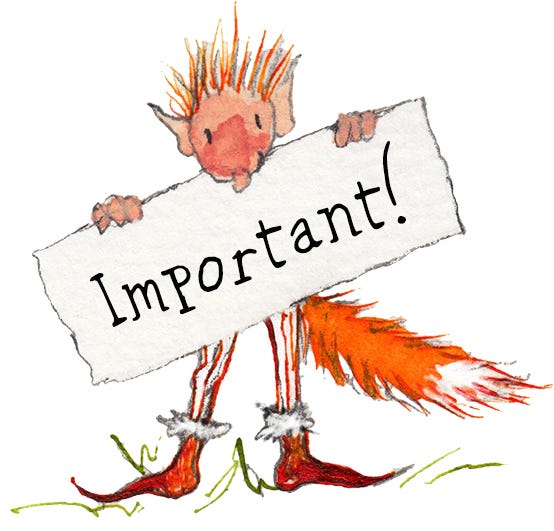
I would absolutely love to know how our ancestors came to such conclusions as: greater celandine + heart of a mole = thwart all enemies. If there are still humans on the earth in another millennia, I wonder what thinking of ours they will look back on in wonder? Love this stuff!